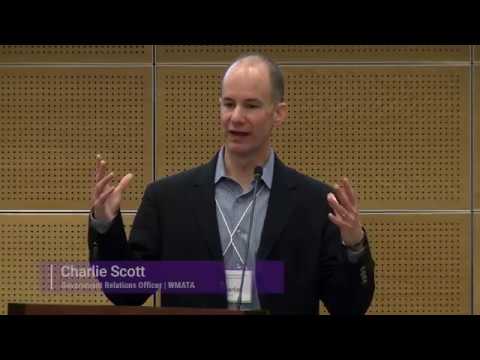The Estonian Ecumenical Patriarchate of Constantinople is a small group which is barely heard of outdoor Estonia. The membership of the Apostolic Orthodox was about 30,000 in 1996. Since 1840 many Lutherans transformed to Orthodox Christianity which resulted in the rise of the Orthodox in Estonia. In 1920, the Apostolic Orthodox Church turned autonomous from the Russian Patriarch Tikhon.
The close ties between the Baptist church and the new faith led to a union, and a lot of the free-believers transformed to Baptist. A revolutionary awakening motion in the second half of the 19th Century led to the so-referred to as free movement Protestants. Today the Baptist Protestant Christians are around zero.4%, the Jehovah’s Witness Christian zero.four%, and the Free Congregation Protestant Christian and Pentecostal Protestant Christian are zero.2% of the inhabitants. The first encounter of Estonians with Christianity was in 1054. The trade routes and paths of war joining the East and the West put Estonia in a position for faith confluence.
Rüütel Presidency And Siim Kallas Government (2001–
The Soviet authorities, having gained management over Estonia, immediately imposed a regime of terror. During the first year of Soviet occupation (1940–1941) over eight,000 people, including most of the nation’s main politicians and navy officers, were arrested. About 2,200 of the arrested had been executed in Estonia, whereas most of the others were moved to Gulag jail camps in Russia, from where only a few had been later able to return alive.
New Protestant faiths arrived into Estonia by the top of the nineteenth Century. Pentecostals arrived in Estonia on the onset of the 20th Century. The new faiths posed a spiritual estonian brides threat to the Soviet rule, and the liberty of worship was curtailed.
Elections for a provisional parliament, Maapäev, was organized, with the Menshevik and Bolshevik factions of the Russian Social Democratic Labour Party acquiring a part of the vote. On 5 November 1917, two days before the October Revolution in Saint Petersburg, Estonian Bolshevik leader Jaan Anvelt violently usurped energy from the legally constituted Maapäev in a coup d’état, forcing the Maapäev underground. Sweden’s defeat by Russia within the Great Northern War resulted in the capitulation of Estonia and Livonia in 1710, confirmed by the Treaty of Nystad in 1721, and Russian rule was then imposed on what later became modern Estonia. Nonetheless, the legal system, Lutheran church, native and town governments, and education remained mostly German till the late nineteenth century and partially until 1918.
On 14 June 1941, when mass deportations occurred concurrently in all three Baltic countries, about 10,000 Estonian civilians have been deported to Siberia and different remote areas of the Soviet Union, where practically half of them later perished. During the primary Soviet occupation of 1940–forty one about 500 Jews were deported to Siberia. Estonia as a unified political entity first emerged after the Russian February Revolution of 1917. With the collapse of the Russian Empire in World War I, Russia’s Provisional Government granted nationwide autonomy to a unified Estonia in April. The Governorate of Estonia within the north (comparable to the historic Danish Estonia) was united with the northern part of the Governorate of Livonia.

The creation of the Republic of Estonia in 1918 marked the beginning of a new era for the Jews. Approximately 200 Jews fought in fight for the creation of the Republic of Estonia, and 70 of those men had been volunteers. The Jewish neighborhood shortly prepared its application for cultural autonomy. They totaled 3,045, fulfilling the minimum requirement of 3,000. In June 1926 the Jewish Cultural Council was elected and Jewish cultural autonomy was declared.
Before the Second Northern War, Estonia was dominated by the Swedish premier. By 1887, even the German and Estonian languages have been changed by the Russian language for training in Estonia.
Estonia In The Swedish Empire
Jewish cultural autonomy was of nice curiosity to the global Jewish neighborhood. The Jewish National Endowment presented the Government of the Republic of Estonia with a certificate of gratitude for this achievement.
The new configuration of the Estonian Parliament shows a prevalence of centre-left events. The lack of a concrete chance for presidency alternance in Estonia has been quoted as a priority. There have been, at the time of Soviet occupation in 1940, approximately 2,000 Estonian Jews. Many Jewish people have been deported to Siberia together with different Estonians by the Soviets. With the invasion of the Baltics, it was the intention of the Nazi authorities to make use of the Baltic countries as their major area of mass genocide.
Consequently, Jews from countries exterior the Baltics were shipped there to be exterminated. Out of the approximately four,300 Jews in Estonia prior to the warfare, between 1,500 and a pair of,000 have been entrapped by the Nazis, and an estimated 10,000 Jews had been killed in Estonia after having been deported to camps there from Eastern Europe. The means of Jewish settlement in Estonia started within the 19th century, when in 1865 Russian Tsar Alexander II granted them the proper to enter the region.
World War Ii (1939–
In the thirteenth Century, the Roman Catholic Church compelled onto the Estonians Catholicism with swords and army oppression. The faith dominated over the centuries till the sixteenth Century when the Reformation took over. In the late twentieth Century, a brand new motion arose to unfold Catholicism which by now had been marginalized by Protestantism. Today Catholic congregational members are zero.four% of the inhabitants.
The reoccupation of Estonia state by the Soviet Union ended the autonomy of the Estonian Apostolic Orthodox Church nonetheless, the autonomy was regained in 1996 after Estonia regained her independence underneath the Soviet Union. The variety of the Estonian Apostolic Orthodox Church through the Soviet era was about 200,000 out of which 80% have been native Estonians.
While Russia denied any direct involvement in the attacks, hostile rhetoric within the media from the political elite influenced people to assault. Following the 2007 cyber-assaults, the NATO Cooperative Cyber Defence Centre of Excellence (CCDCOE) was established in Tallinn. The 2007 parliamentary elections have proven an enchancment in the scores of the Reform Party, gaining 12 seats and reaching 31 MPs; the Centre Party held, while the unified right-conservative Union of Pro Patria and Res Publica lost sixteen. Socialdemocrats gained 4 seats, while the Greens entered the Parliaments with 7 seats, at the expense of the agrarian People’s Union which lost 6.
It’s understandable that Estonians choose English ‘s it is, in any case, a global language. Russian, German and even Swedish can be associated with occupation and colonization. Estonia and the other Baltic states are small nations, and they can’t anticipate everybody to study their language.









